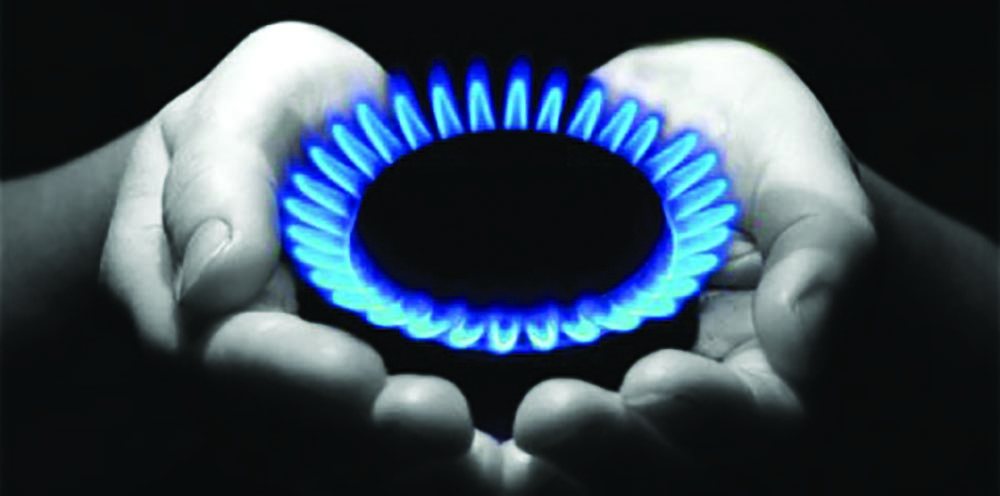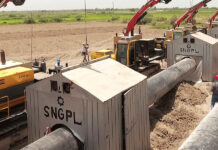While consumers got somewhat better gas supply to warm up their rooms and cook food this winter, they weren’t the only ones benefiting. Sui Northern Gas Pipeline Limited (SNGPL) has reported a profit after tax of Rs 12.4 crores for the year ended 30 June, 2016, against a loss after tax of Rs 250 crores in the year ended 30 June, 2015. The company has managed to post a profit after three years, a period where annual reports were not published on account of Oil and Gas Regulatory Authority (OGRA) quorum (the minimum number of members of the board of directors that must be present at any of its meetings to make the proceedings of that meeting valid) not being complete.
In addition to that, SNGPL has issued its quarterly report for the ongoing fiscal year 2017’s first quarter (July-September), revealing a profit before tax of Rs 200 crores, compared to a loss before tax of Rs 77.6 crores in the corresponding period of last year. Net Sales on an annual basis have increased by 18 per cent in FY2016, while gas sales in the first quarter of FY2017 have increased by 21 per cent against the corresponding period of the last fiscal year. In addition to that, gross profit has increased by 97 per cent in the fiscal year 2016, while cost of gas sold and other expenses increased by 17.3 per cent and 8.2 per cent respectively. Therefore, it can be deduced that major contribution to the profit came from a reduction in overall expenses. On top of that, SNGPL is going to set up 30 LPG-air mix plants in selected areas where natural gas supply does not exist, such as Azad Jammu and Kashmir, Gilgit-Baltistan and Chitral etc, which would consequently reduce deforestation in those areas. Sale of LNG is an important factor in improving the topline, and subsequently the bottom line of the company, hence the company is focusing on LNG sales, evidenced by an increase of 429 per cent in RLNG gross sales in FY2016, according to the latest annual report published by the company.

“We earned a profit mainly on the basis of reduction in UFG(unaccounted for gas) and increase in sales,” says Managing Director/CEO SNGPL, Amjad Latif, adding that almost three-fourth (Rs 140 crores) of the profit before tax earned in 1QFY2017 is due to the reduction in UFG.
SNGPL management drafted a 3-year plan in 2013 to reduce UFG from 11.5 per cent to 9 per cent in the year 2016.
“We are proud to announce that we brought down the UFG to 8.50 per cent in 2016, surpassing our target of 9 per cent,” says Latif. Other reasons given by the CEO for improvements in the financial performance of the company include doubling the capacity of its metering workshops; deployment of laser leak detector to identify and plug underground leakages; latest electronic gadgets such as electronic volume corrector; and the use of GPRS and GSM for monitoring live data from industrial users and CNG pumps. With the use of such technology, vigilance of the industrial and domestic users has been greatly increased. The company has also repaired and replaced (where needed) above the ground and underground pipelines in order to reduce gas leakage.

“Earlier, people had to wait for two months to get a new meter. Now it takes only one day for the meter to be made since we have doubled the capacity of our workshops,” says Latif.
Talking about the 4.5 per cent threshold level of UFG set by OGRA, the CEO said that if the regulator expects the company to perform at par with European countries, it should ensure the support of state institutions like the law enforcement agencies and judiciary to help the company achieve it.
“We need police and courts to reduce gas theft,” says Latif, while adding that the recent Gas (Theft Control and Recovery) Act 2016 has allowed for the creation of special courts which would solve the cases expeditiously in a period of three months, and would thus help in improving the UFG level as well as the financial performance of the company.
According to an article published in a local newspaper, SNGPL has so far plugged 742,202 above-ground leakages and 26,467 underground leakages. In addition to these, it has rehabilitated pipeline covering an area of 231.42 kilometres and replaced 462,582 metres of pipeline. Raids have also been conducted in association with the Federal Investigation Agency (FIA) and other law enforcement agencies to curb the stealing of gas. Incidences involving theft of 3,854 million cubic feet have been unearthed and FIRs have been lodged against people involved in the crime.
The company is ensuring utilisation of Hi-Flow Sampler to quantify above-ground and underground gas leakages and is purchasing cyber locks to enhance security at the consumer meter station.
The CEO believes that the company has turned itself around and the profit-earning is not only sustainable, but will also grow with time.
“God willing, we will increase the profits and you will see an even better result for the second quarter of fiscal year 2017,” says Latif, adding that the result will be announced by the start of February 2017. He also disclosed that the company has set a target to sell 500,000 new connections in the ongoing fiscal year, half of which have already been sold.
Giving credit to the management, the board of directors has praised the company for turning the company’s losses into profits finally, and hopes that the management would be able to sustain it.







